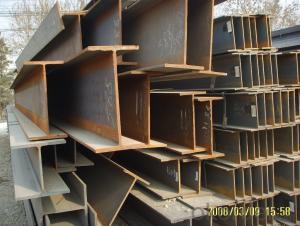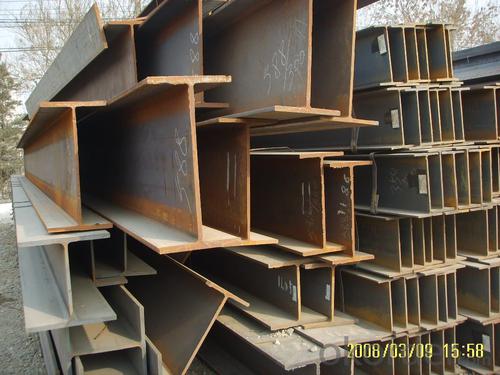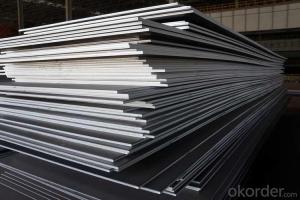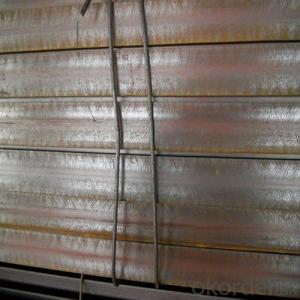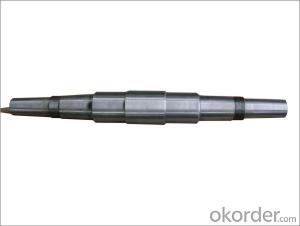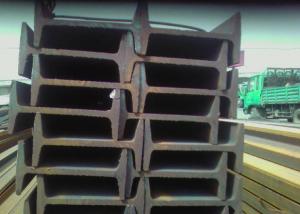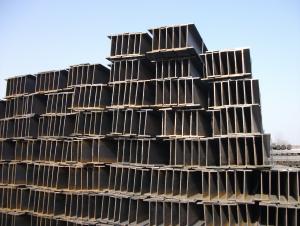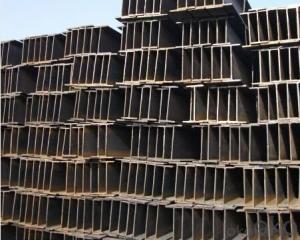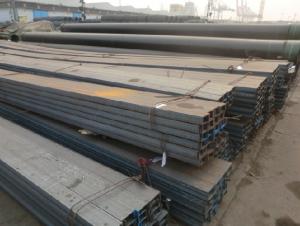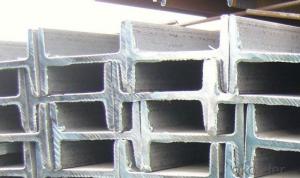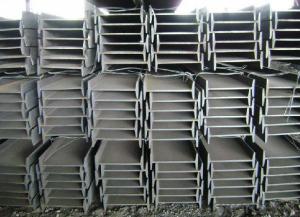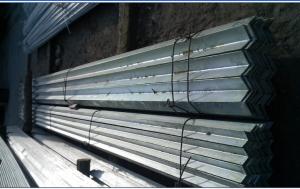High Quality Hot Rolled Structural Steel I Beams
- Loading Port:
- China main port
- Payment Terms:
- TT or LC
- Min Order Qty:
- 50 m.t.
- Supply Capability:
- 100000 m.t./month
OKorder Service Pledge
OKorder Financial Service
You Might Also Like
Specifications of High Quality Hot Rolled Structural Steel I Beams
1. Invoicing on theoretical weight or actual weight as customer request
2. Length: 5.8m, 6m, 9m, 12m as following table
3. Sizes of Steel I-Beams: 80mm-270mm
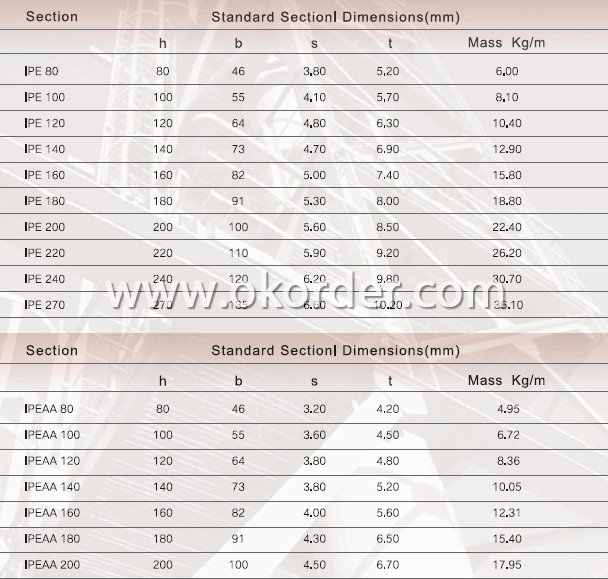
Dimensional Specifications of Steel I-Beams: EN10025, ASTM, GB Standard, JIS, etc.
Material Specifications of Steel I-Beams: EN10025, S235JR, GB Q235B or Equivalent
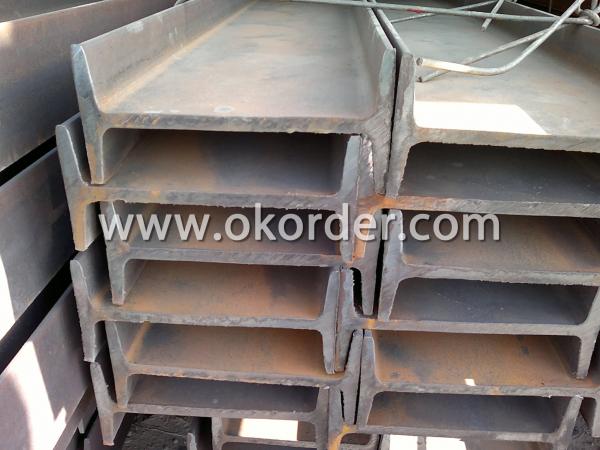
Applications of High Quality Hot Rolled Structural Steel I Beams
Commercial building structure
Pre-engineered buildings
Machinery support structures
Prefabricated structure
Medium scale bridges
Package & Delivery of High Quality Hot Rolled Structural Steel I Beams
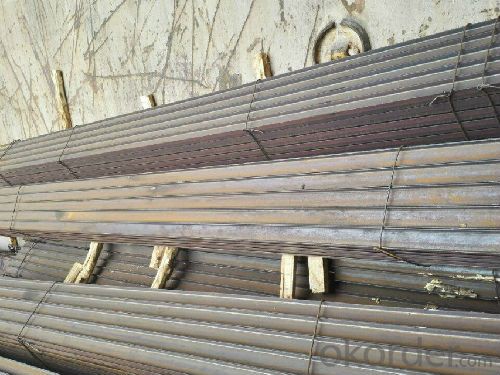
1. Package: All the products are packed in bundles and tied by steel wire rod then put into containers or in bulk cargo. Each bundle of I-Beam will be hung with the markings of CNBM or as the requriements of the customer. Each bundle contains about 50 pieces.
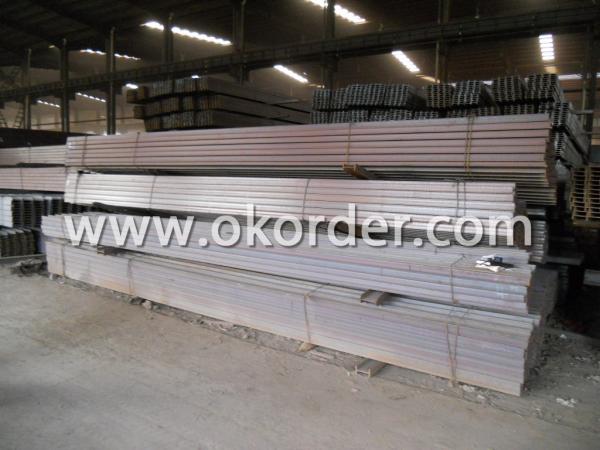
2.Tag mark: there will be tag mark tied up on the bundles. The information usually including supplier logo and name, product name, made in China, shipping marks and other information request by the customer.
If loading by container the marking is not needed, but we will prepare it as customer request.
3. Delivery: The Steel I-Beams will be delivered to the loading port in 45 days after receiving your advance payment or the original L/C at sight.
4. Transportation: the goods are delivered by truck from mill to loading port, the maximum quantity can be loaded is around 40MTs by each truck. If the order quantity cannot reach the full truck loaded, the transportation cost per ton will be little higher than full load.
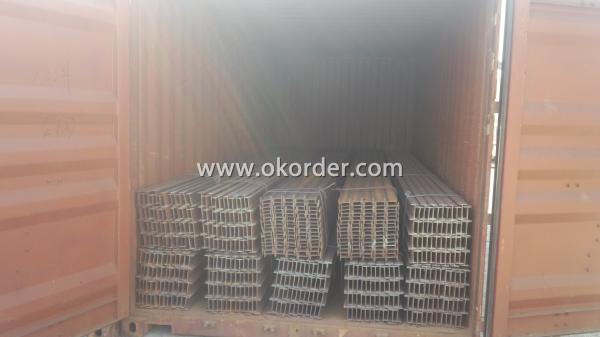
- Q: Can steel I-beams be recycled?
- Indeed, steel I-beams have the ability to be recycled. Steel, being a remarkably recyclable substance, applies to I-beams as well. The recycling of steel I-beams encompasses the melting of these beams until they transform into a liquid state, subsequently utilized in the creation of novel steel goods. By adopting this procedure, energy and resources are conserved in contrast to the manufacture of steel from primary materials. Moreover, steel recycling contributes to waste reduction and diminishes the ecological consequences associated with steel production.
- Q: Can steel I-beams be painted or coated after installation?
- Yes, steel I-beams can be painted or coated after installation. The process involves cleaning the surface, applying a primer, and then applying the desired paint or coating. This helps protect the steel from corrosion, enhances aesthetic appeal, and extends its lifespan.
- Q: How do steel I-beams perform in areas with high salinity or corrosive environments?
- Steel I-beams can perform well in areas with high salinity or corrosive environments, particularly if they are properly protected and maintained. High salinity and corrosive environments, such as coastal regions or industrial areas, can accelerate the corrosion process and potentially compromise the structural integrity of steel. To mitigate the effects of high salinity and corrosion, steel I-beams are often coated with protective materials such as galvanized coatings, epoxy coatings, or specialized paint systems. These coatings act as a barrier, preventing direct contact between the steel and the corrosive elements. Regular inspections and maintenance are also essential to identify and address any signs of corrosion early on. However, it is important to note that even with protective coatings, the lifespan of steel I-beams in high salinity or corrosive environments may be reduced compared to those in less corrosive environments. The severity of the environment, the quality of the coatings, and the maintenance practices all play a crucial role in determining the performance and longevity of steel I-beams in such conditions. In particularly harsh environments, alternative materials such as stainless steel or fiberglass-reinforced polymers (FRP) may be considered as they are inherently more resistant to corrosion. These materials offer extended durability and are often used in marine structures or other applications where corrosive conditions are prevalent. Overall, steel I-beams can still be a viable option in areas with high salinity or corrosive environments, provided that appropriate protective measures are taken and regular maintenance is carried out. Consulting with structural engineers or corrosion specialists can help determine the most suitable approach to ensure the long-term performance and safety of steel I-beams in such conditions.
- Q: Are steel I-beams resistant to earthquakes?
- Yes, steel I-beams are resistant to earthquakes. Steel is a highly durable and flexible material that can withstand the forces exerted during an earthquake. I-beams, specifically, are designed to have a high strength-to-weight ratio, making them strong enough to resist the lateral forces and vibrations caused by seismic activity. Additionally, steel I-beams can be further reinforced with bracing or other seismic-resistant techniques to enhance their resistance to earthquakes. Overall, steel I-beams are widely used in earthquake-prone areas for their ability to provide structural stability and ensure the safety of buildings and infrastructure during seismic events.
- Q: How do you calculate the moment of inertia for steel I-beams?
- In order to determine the moment of inertia for steel I-beams, one must take into account the specific dimensions and shape of the beam. The moment of inertia measures the object's resistance to rotational motion around a specific axis. For I-beams, the moment of inertia refers to their resistance to bending or flexing around their central axis. The moment of inertia formula for an I-beam can be derived using basic principles of calculus. It involves dividing the beam into smaller sections and summing up the contributions from each section. The moment of inertia is influenced by the beam's cross-sectional shape and dimensions, particularly the area and the distance from the centroid or neutral axis. To calculate the moment of inertia for an I-beam, the following formula can be used: I = (b1 * h1^3) / 12 + (b2 * h2^3) / 12 + (2 * A * d^2) Where: - I represents the moment of inertia - b1 and h1 represent the width and height of the top flange - b2 and h2 represent the width and height of the bottom flange - A represents the area of the web (the vertical section connecting the two flanges) - d represents the distance from the centroid of the web to the centroid of the top flange To calculate the moment of inertia, one must obtain or measure the dimensions of the I-beam, including the dimensions of the flanges (top and bottom) and the web. Once the measurements are obtained, they can be substituted into the formula to determine the moment of inertia. It is important to emphasize that the moment of inertia plays a crucial role in structural engineering. It helps determine the beam's ability to resist bending, deflection, and torsion, which are essential factors in designing structures that are safe and efficient.
- Q: What are the safety considerations when working with steel I-beams?
- When dealing with steel I-beams, it is essential to keep in mind several crucial safety considerations. These considerations encompass: 1. Personal protective equipment (PPE): Wearing the appropriate PPE, including hard hats, safety glasses, gloves, and steel-toed boots, is vital. This ensures protection against potential injuries and falling objects. 2. Lifting and handling: Correctly lifting and handling steel I-beams is of utmost importance due to their weight and associated risks. Proper lifting techniques, such as using cranes or forklifts with suitable weight capacities, should be employed. Additionally, the load must be evenly distributed and securely fastened. 3. Structural stability: Prior to commencing work with steel I-beams, it is crucial to verify their structural stability. This entails inspecting for any signs of damage, such as cracks or bends, and ensuring proper anchoring or support. 4. Fall prevention: When working at heights or on elevated platforms, implementing fall prevention measures is essential. This may include the use of guardrails, safety harnesses, or safety nets to prevent falls and safeguard workers against potential injuries. 5. Communication and coordination: Effective communication and coordination among workers are paramount. Clear communication regarding tasks, movements, and potential hazards can help prevent accidents and ensure overall workplace safety. 6. Training and supervision: Adequate training and supervision play a vital role when working with steel I-beams. Workers should receive training on safe work practices, equipment usage, and emergency procedures. Proper supervision helps identify potential hazards and ensures adherence to safety protocols. 7. Fire prevention: Steel I-beams are susceptible to fire, necessitating the implementation of fire prevention measures. This includes appropriate storage and handling of flammable materials, provision of adequate fire extinguishers, and the establishment of an emergency evacuation plan. By giving priority to these safety considerations, workers can minimize risks and establish a safer work environment when dealing with steel I-beams.
- Q: Can steel I-beams be used in bridge construction?
- Yes, steel I-beams are commonly used in bridge construction due to their high strength-to-weight ratio and ability to support heavy loads.
- Q: Can steel I-beams be used for roof trusses?
- Yes, steel I-beams can be used for roof trusses. They are commonly used in commercial and industrial buildings where their strength and load-bearing capacity are advantageous. However, it is important to ensure proper engineering and design considerations are taken into account to meet the specific structural requirements and local building codes.
- Q: Can steel I-beams be used for stadiums and arenas?
- Yes, steel I-beams can definitely be used for the construction of stadiums and arenas. In fact, steel I-beams are widely used in the construction industry due to their exceptional strength and durability. These beams are capable of supporting heavy loads and can span long distances, making them ideal for large-scale structures like stadiums and arenas. Steel I-beams offer several advantages when used in the construction of stadiums and arenas. Firstly, they have a high strength-to-weight ratio, meaning they can support heavy loads while also being relatively lightweight. This allows for the construction of expansive and open spaces without the need for excessive support columns or walls, providing unobstructed views for the audience. Additionally, steel I-beams are highly resistant to fire, corrosion, and pests, ensuring the structural integrity of the stadium or arena over time. They can also withstand extreme weather conditions, such as strong winds and earthquakes, which is crucial for ensuring the safety of the spectators. Moreover, steel I-beams can be easily fabricated and assembled, making the construction process more efficient and cost-effective. They can be customized to fit the specific design requirements of the stadium or arena, allowing for flexibility in architectural design. Overall, steel I-beams are an ideal choice for the construction of stadiums and arenas due to their strength, durability, resistance to various elements, and versatility in design. Their use in such structures ensures the safety and comfort of the spectators while providing a solid and reliable framework for these architectural marvels.
- Q: What are the advantages of using painted steel I-beams?
- Construction projects can benefit from the use of painted steel I-beams for several reasons. To begin with, the application of paint on the beams creates a protective layer that shields against corrosion and rust. Moisture and chemicals can cause steel to oxidize, but the paint acts as a barrier, preventing contact between the metal and these elements. As a result, the lifespan of the I-beams is extended, reducing the need for frequent maintenance or replacement. Additionally, painted steel I-beams provide an improved aesthetic to the overall structure. The paint can be customized to match the desired color scheme or architectural style, seamlessly blending the beams with the surrounding elements. This enhances the appearance and value of the building, making it more visually appealing and cohesive. Moreover, the application of paint on steel I-beams enhances their visibility and safety. By using high-visibility paint, the beams become more noticeable in low-light conditions, increasing safety for workers and pedestrians. This is especially beneficial in industrial or construction settings where heavy machinery or vehicles operate near these beams. Furthermore, painted steel I-beams offer easier identification and labeling within a construction site. By assigning different colors or markings to specific beams, their location and purpose become easier to track and identify. This promotes organization and efficiency in the construction project, reducing errors and saving time. Lastly, painted steel I-beams prove to be cost-effective in the long run. Although the initial investment may be slightly higher compared to unpainted beams, the added protection against corrosion and rust significantly reduces maintenance and repair costs over time. Furthermore, the enhanced durability of the painted beams ensures a longer lifespan, minimizing the need for replacement or repairs. In conclusion, the use of painted steel I-beams offers advantages such as corrosion protection, improved aesthetics, enhanced visibility and safety, easier identification, and long-term cost savings. These benefits make painted steel I-beams a popular choice in various construction applications.
Send your message to us
High Quality Hot Rolled Structural Steel I Beams
- Loading Port:
- China main port
- Payment Terms:
- TT or LC
- Min Order Qty:
- 50 m.t.
- Supply Capability:
- 100000 m.t./month
OKorder Service Pledge
OKorder Financial Service
Similar products
Hot products
Hot Searches
Related keywords
